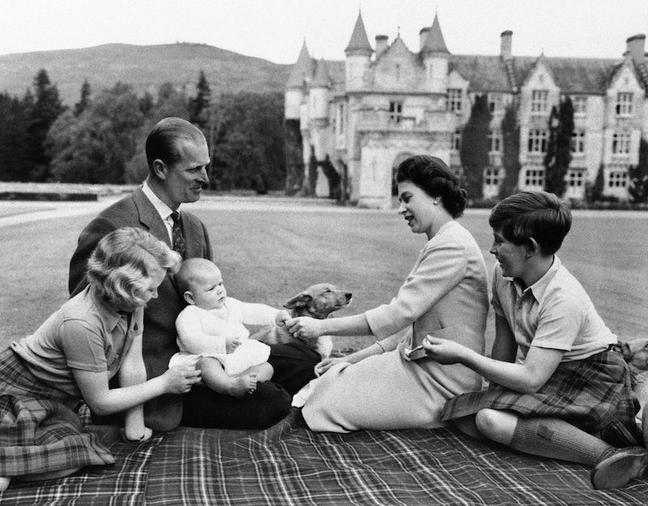When the 21-year-old Princess Elizabeth sat down at the wooden table in the gardens of Cape Town’s Government House in 1947, she had little idea how quickly her life was about to change. Speaking slowly and clearly into a BBC Radio microphone, the future Queen made a lifelong vow: “I declare before you all that my whole life, whether it be long or short, shall be devoted to your service.” Four years later, aged 25, she became Queen of one of the world’s most powerful nations. Now, nine decades on, that declaration reflects how many see Her Majesty’s life and reign: one of duty and ever-lasting service.
In the 90 years she has been alive, 64 of them as Queen, the world has changed beyond recognition. When she was born in 1926 to The Duke and Duchess of York (later King George VI and Queen Elizabeth, The Queen Mother), the British Empire was at its territorial peak. On her accession in 1952, meat was still rationed in Britain, murder was punishable by death and the Internet didn’t exist. 13 British Prime Ministers have held weekly audiences with her, dictatorships around the world have been toppled and overthrown and, perhaps most importantly, the Queen has travelled hundreds of thousands of miles to meet people from all walks of life, remaining a constant figure in the lives of those whose countries she leads and visits. Indeed, over the course of her reign – now the longest of any British monarch – she has seen, advised and been a part of many events that have come to shape the 20th and 21th centuries, not to mention her own life, values and beliefs.

(Photograph: Getty)
And yet, one of the earliest defining moments of her life came about even before she took the throne. During a visit to HMS Dartmouth, aged 13, the Queen met a dashing young naval officer, who would go on to become her husband of 68 years and the “strength and stay” of her life. Despite Prince Philip being five years her senior, the young Princess was smitten on their first meeting. In the following years, as the pair eagerly exchanged letters, a romance blossomed. Not only was the marriage announcement and jubilant wedding a defining life event for the Queen, it was an extravagant and welcome break in Britain’s bleak post-war landscape. It was also the catalyst for the Queen to experience her first, and last, experience of ‘ordinary’ life. When Prince Philip was made First Lieutenant on HMS Chequers in 1949, he was posted to Malta. The Queen’s love affair with the island began when, later that year, Elizabeth’s father King George VI, suggested she joined her husband, and so she arrived to the ordinary life as a wife of a naval officer on her second wedding anniversary, November 20, 1949.
But as much as the Queen’s reign has been largely positive, there have been troublesome times. Many people will remember the tragic images of the devastating fire that tore through Windsor Castle in 1992. The 15-hour ordeal saw 250 firefighters use 1.5 million gallons of water to extinguish the blaze, as the Queen looked on, visibly distraught at seeing the residence she had spent a great deal of time in during the Second World War, in flames. That same year, the marriages of three of her children, Prince Charles, Prince Andrew and Princess Anne, disintegrated. In all these instances, the Queen relied on the support of her Prime Ministers to advise and guide her through a difficult time.

(Photograph: Associated Press)
As the former Labour Prime Minster, James Callaghan, observed, the Queen has provided provided friendliness, not friendship to her Prime Ministers and, indeed, the conversations over the years have often been of mutual benefit. In her early years as Queen, Winston Churchill’s influence and guidance was of great help as she began to adapt to the formalities of a monarch’s life of duty. As time went on, Her Majesty would be introduced to state secrets during the 1956 Suez Crisis and 1982 Falklands War and listen to the concerns over Britain’s integration with Europe and economic downturns.
For millions across the world, however, Queen Elizabeth II has simply been a reassuring constant. Many of those alive today will have only known one Queen and, indeed, there is usually only one person that first springs to mind when you mention the words ‘The Queen’. From the embers of the dwindling British Empire, Her Majesty has championed the rise of the Commonwealth and worked tirelessly to maintain its flourishing connections today. She has bestowed thousands of people with honours for their services to charities and communities whilst, at all times, revealing her true feelings to only those closest to her. With no indication of stopping any time soon, her 90th birthday reminds us that Britain should be proud. Proud of an lady who has consistently put the country first; proud of a lady whose sense of duty is respected globally and, above all, proud of an institution that embodies the best of British heritage, history and tradition.
By James Brookes
See The Queen’s life in pictures, here.

Become a Gentleman’s Journal Member?
Like the Gentleman’s Journal? Why not join the Clubhouse, a special kind of private club where members receive offers and experiences from hand-picked, premium brands. You will also receive invites to exclusive events, the quarterly print magazine delivered directly to your door and your own membership card.


